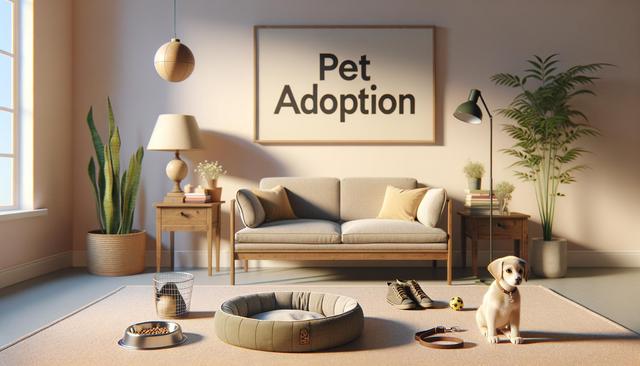Understanding the Responsibilities of Pet Ownership
Before diving into the pet adoption process, it’s essential to understand the responsibilities that come with owning an animal. Pets are not just temporary companions—they require daily attention, healthcare, training, and a safe environment. Whether you’re considering a dog, cat, rabbit, or another type of animal, each comes with its own set of needs and behaviors that potential adopters should be familiar with. You’ll need to consider your lifestyle, working hours, home environment, and financial readiness to ensure you can provide long-term care.
Some important responsibilities include:
- Feeding and grooming regularly
- Providing routine veterinary check-ups and vaccinations
- Training and socialization, especially for dogs
- Ensuring safety and comfort in their living space
Taking these factors into account helps you create a nurturing environment for your new companion and reduces the chances of rehoming later.
Choosing the Right Pet for Your Lifestyle
Selecting the right pet involves more than just falling in love with a cute face. Each species, and even breed, has different temperaments, energy levels, and care requirements. For example, high-energy dog breeds may require several hours of exercise per day, while some cats prefer quiet, independent lifestyles. Matching your living situation and personal habits with your future pet’s needs is key to a successful adoption.
Here are a few questions to guide your decision:
- How much time can you devote daily to pet care?
- Do you live in an apartment or have a large outdoor space?
- Are there children or other pets in your home?
- Do you have any allergies to consider?
Answering these questions can help narrow down the pet options that will fit harmoniously into your life.
Where to Adopt: Shelters, Rescues, and Foster Networks
There are several avenues to explore when looking to adopt a pet. Animal shelters, rescue organizations, and foster-based networks all offer different adoption experiences and benefits. Shelters typically house a wide variety of animals and may have more immediate availability. Rescue groups often focus on specific breeds or animals with special needs, providing in-depth information and support. Foster networks allow pets to be cared for in home environments, giving you a better idea of their behavior in a domestic setting.
Benefits of adopting from these sources include:
- Helping reduce overcrowding in shelters
- Receiving support and guidance from experienced staff or volunteers
- Often lower adoption fees compared to buying from breeders
- Access to animals that have been vaccinated and sometimes spayed/neutered
Researching local organizations and asking detailed questions about the adoption process can help you find a reputable source and a pet that meets your expectations.
The Adoption Process: What to Expect
The pet adoption process may vary depending on the organization, but most follow a similar structure. It usually begins with an application, where potential adopters provide information about their lifestyle, home environment, and experience with animals. This helps ensure that the pet is placed in a suitable home. Some organizations may also require a home visit or reference checks as part of their screening process.
Steps in the typical adoption process include:
- Filling out an application or inquiry form
- Meeting the animal in person, sometimes multiple times
- Completing background checks or home evaluations
- Paying an adoption fee and signing an agreement
The process can take anywhere from a day to several weeks, depending on the organization and the specific animal. Patience and transparency go a long way in ensuring a smooth experience.
Preparing Your Home and Life for a New Pet
Once you’ve been approved to adopt, the next step is preparing your home. Creating a welcoming and secure environment for your new pet is critical to a smooth transition. This includes gathering necessary supplies such as food, water bowls, bedding, toys, and any species-specific items like litter boxes or leashes. It’s also important to discuss roles and routines with other household members so that everyone is on the same page.
Key preparations include:
- Pet-proofing your home to prevent access to harmful substances or breakable items
- Choosing a designated space for your new pet to sleep and eat
- Scheduling a veterinary check-up within the first few weeks
- Introducing the pet gradually to new people, pets, and environments
The first few weeks can be an adjustment period for both you and your pet, so patience and consistency are essential during this time.
Conclusion: Adopting with Purpose and Preparation
Adopting a pet is a life-changing decision that brings immense rewards when done thoughtfully. By understanding the responsibilities involved, choosing a pet that fits your lifestyle, and preparing both emotionally and physically, you set the foundation for a successful adoption. Shelters and rescue organizations offer animals that are eager for a second chance—providing them with a loving home not only changes their life but enriches yours as well. Take your time, ask questions, and approach the process with care to create a lasting bond with your new companion.


